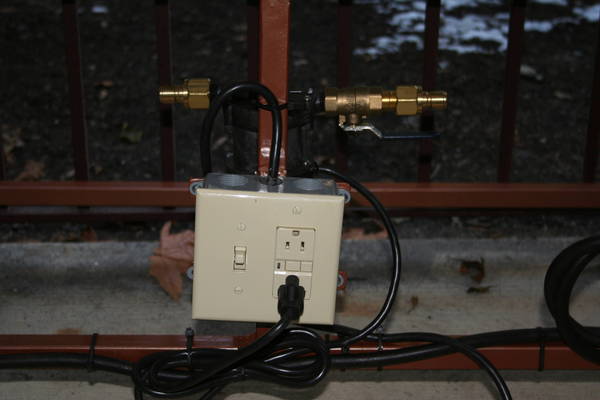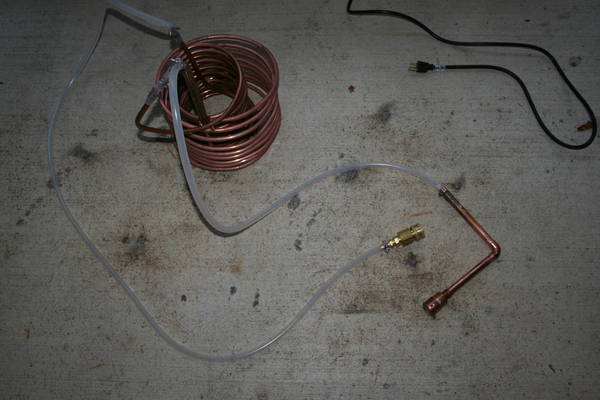You can find the cut list on post 38 of this thread. The rig is 5 feet wide by 16 inches tall and 16 inches deep. By making the height and the width the same, you only have to cut two different lengths of steel; the 4 pieces of 5 foot length and the rest all 14 inches. It is very simple and that was the idea. KISS.
The windshields around the burners came with the burners. Both of them are hacked out of cheap turkey fryers. I just took some CRS strips and welded the rings in place. Nothing special.
I painted the rig with the High Temp Ultra BBQ paint you can get at HD or the big L. It is "Antique Copper" (although it looks brown) and is a semi-gloss satin finish instead of the standard flat black. The semi-gloss holds up a little better than the flat and looks better too. Many coats will get you better protection with this kind of paint. Many people on here complain about it, but if you put several coats on the areas that will see the most heat, it holds up pretty good. Two spray cans would be adequate, but 3 would be better.
The only thing I would do different now is beef up the little "L" brackets I welded on the top to keep the keggles from sliding. One has popped off after only 2 brew sessions.
Hit me up if you have any more questions.













